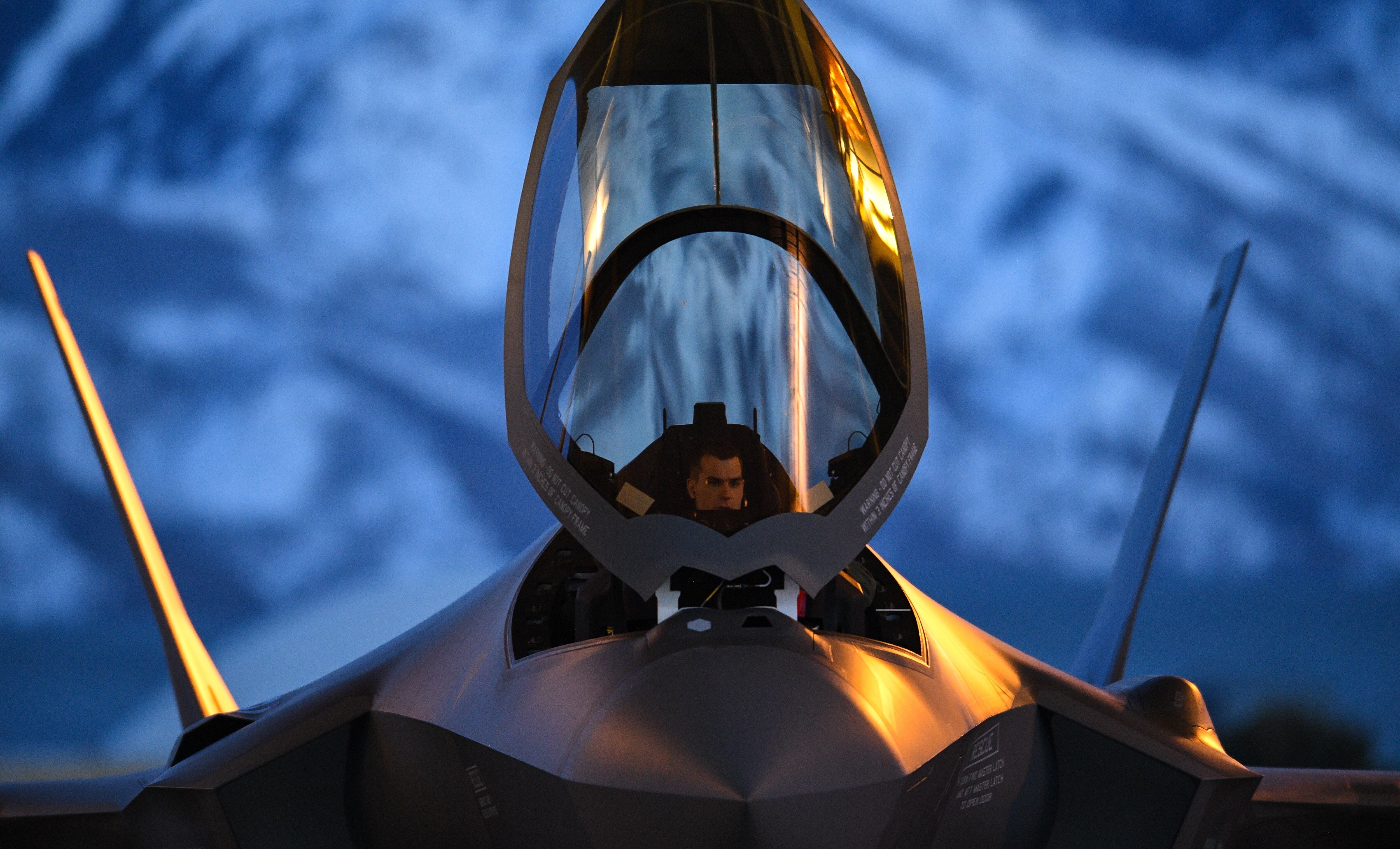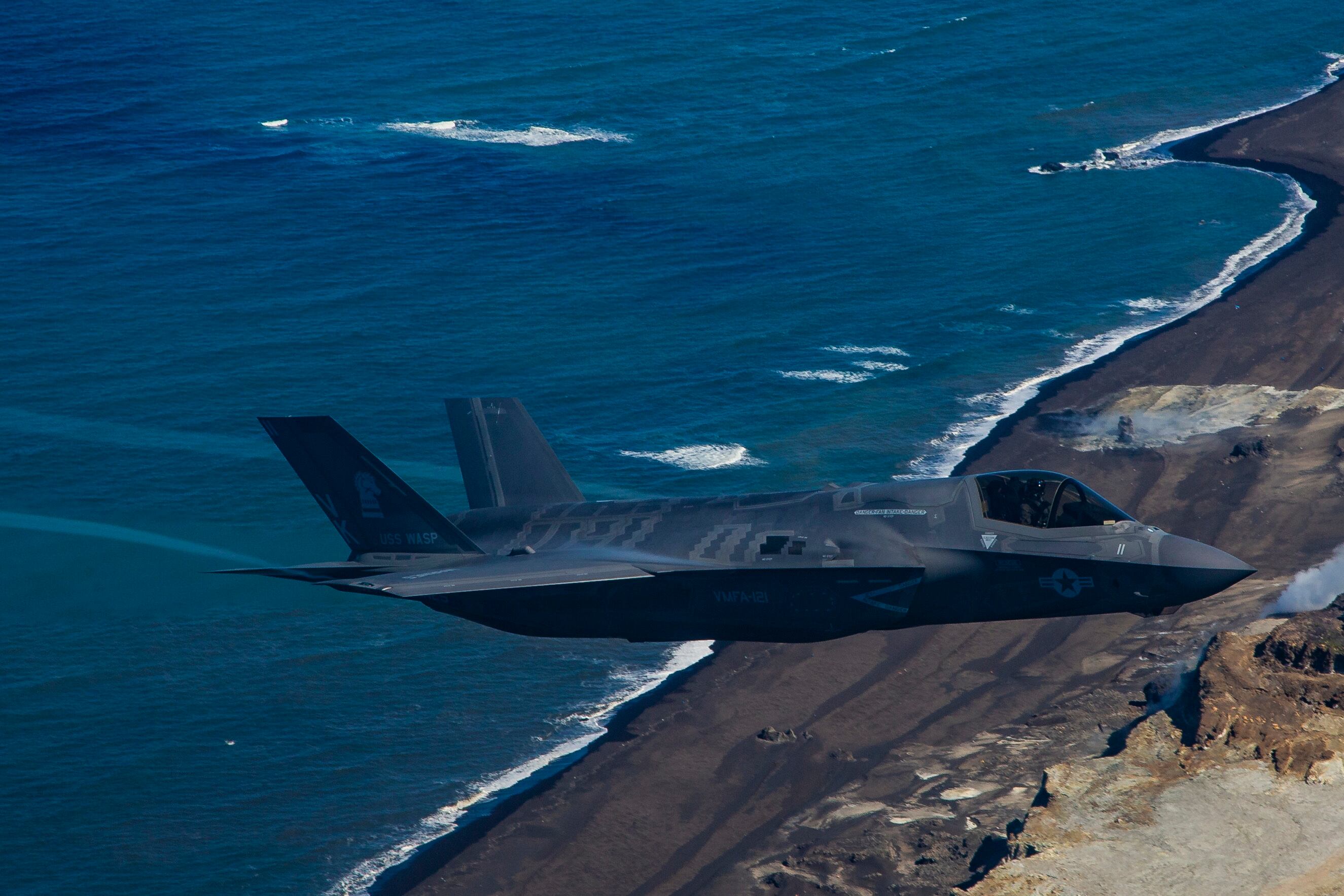Members of Congress have done their utmost to ignore the mounting problems in Lockheed Martin’s F-35 Lightning II program.
In the fiscal 2019 Department of Defense Operational Test and Evaluation Annual Report, released to the public Jan. 30, it was revealed that testers consider the “accuracy of the gun, as installed in the F-35A, to be unacceptable.” While all three versions of the Lightning II, also known as the Joint Strike Fighter, come equipped with a 25mm gun, the Air Force’s version is the only one with an internal mount. The gun accuracy of the F-35B and F-35C have been deemed acceptable.
The report also noted that the JSF program currently carries 873 unresolved deficiencies, including 13 Category 1 items, which involve the most serious flaws that could endanger aircrew and aircraft. While this is a reduction from the 917 unresolved deficiencies and 15 Category 1 items found in September 2018, the report stated that “although the program is working to fix deficiencies, new discoveries are still being made, resulting in only a minor decrease in the overall number of deficiencies.” Furthermore, “there are many significant deficiencies that should be addressed” to ensure that the platform is stable prior to additional functions planned for the JSF in Block 4, the next round of procurement.
RELATED

Ultimately, members of Congress are responsible for the dire state of the F-35. Instead of withholding money until systemic problems have been resolved, legislators have routinely provided funding levels that far exceed the amounts requested by the Pentagon. In FY 2018 and 2019, for example, legislators earmarked $4.5 billion to purchase 36 more Lightning IIs than requested by the DoD. The FY 2020 Defense Appropriations Act, signed into law by President Trump Dec. 20, continued this trend by including $2 billion in earmarks to fund the acquisition of 22 F-35s beyond the number requested by the Pentagon.
Each of these unrequested aircraft will require additional funding to fix known flaws that currently exist, a situation that was completely avoidable if members of Congress had not exceeded the level requested by the Defense Department.
The JSF program has long served as the poster child for defense procurement run amok. In development for nearly 18 years and more than eight years behind schedule, total acquisition costs now exceed $428 billion, nearly double the initial estimate of $233 billion. An April 22, 2019, Bloomberg article noted that the lifetime operation and maintenance costs of the most expensive weapon system in history will total approximately $1.2 trillion, or 20 percent more than the $1 trillion reported in April 2015 by the Government Accountability Office.
RELATED

Once in service, the JSF has proven unreliable. In a Nov. 13 hearing before the House Armed Services Committee, OT&E Director Robert Behler stated that none of the three F-35 variants meet the Pentagon’s five key reliability metrics. According to Behler, “The operational suitability of the F-35 fleet remains at a level below service expectations … for all variants, aircraft are breaking down more often than planned and taking longer to fix.”
The GAO agreed with this assessment in a Nov. 13 GAO report, which stated that the JSF fleet was grounded around 30 percent of the time between May and November 2018 due to insufficient spare parts. As of November 2018, “there was a backlog of about 4,300 spare parts awaiting repair at depots or manufacturers.”
All signs point to the JSF’s troubles continuing unabated. There is a lack of incentive for Lockheed Martin to promptly address flaws in the program or face consequences. By earmarking beyond the amount requested by the Pentagon, legislators have inexplicably rewarded poor performance. Congress has to start holding the contractor’s feet to the fire or the delays and cost overruns in the F-35 program are likely to continue well into the future.
Sean Kennedy is director of research at Citizens Against Government Waste. The opinions expressed do not necessarily reflect the views of Air Force Times staff. If you have a commentary of your own that you would like to submit, contact Kent Miller, editor.





